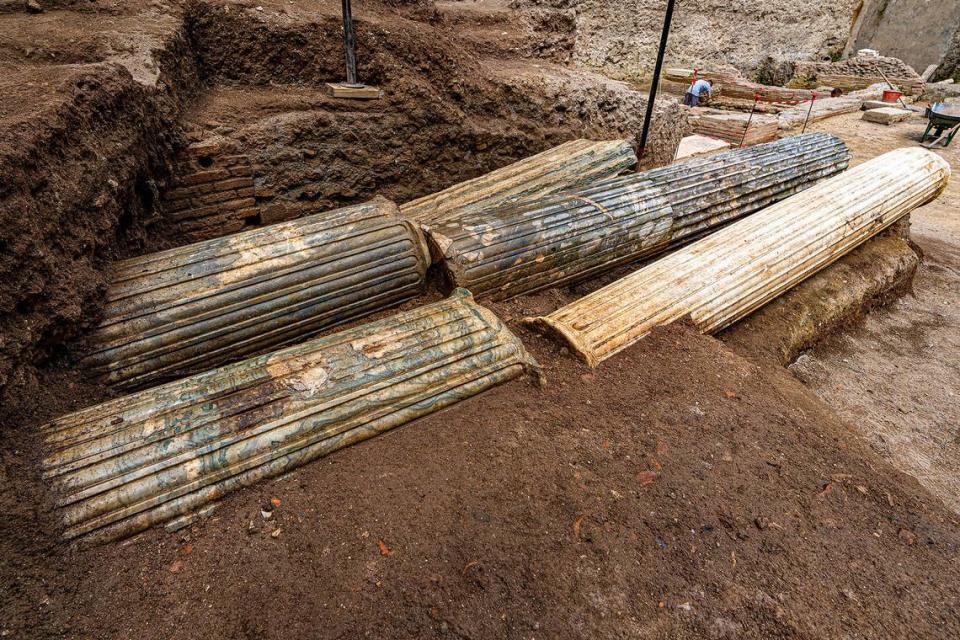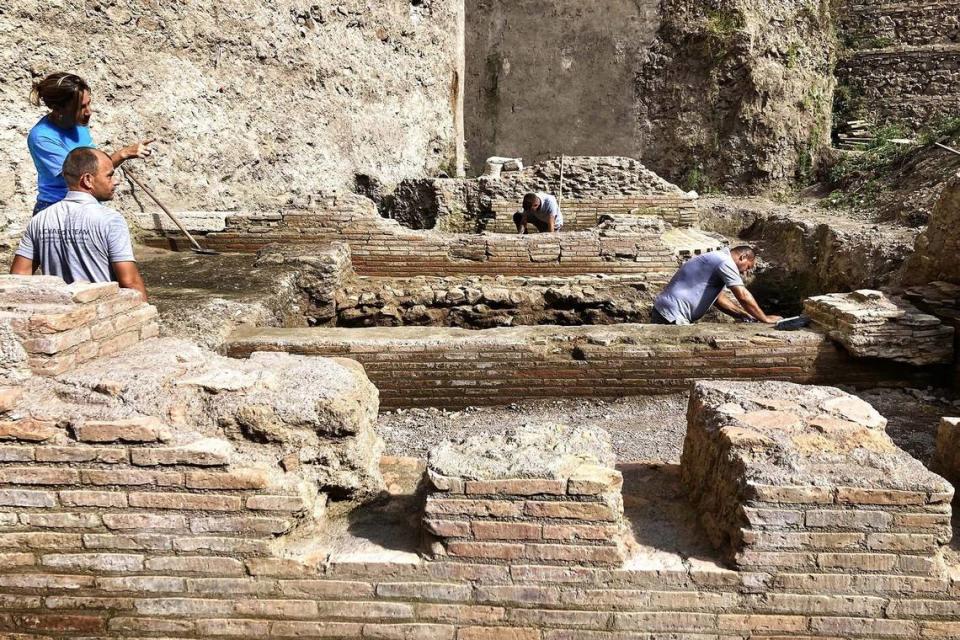Nero’s theater — where audience may have sat on ‘pain of death’ — discovered in Rome
Contrary to legend, Nero probably did not play the fiddle during the Great Fire of Rome.
But his passion for music — among other performing arts — appears to have been real, as supported by new evidence.
The ruins of a private theater that once belonged to the notorious emperor were recently uncovered in Rome, according to a July 26 news release from the city’s superintendent of archaeology.
The exceptional site, which dates back around 2,000 years, was found a stone’s throw away from the Vatican walls, officials said.
In photos, sloping brick floors and fallen marble columns can be seen emerging from the soil.

“It’s a great discovery,” Jane Draycott, an ancient historian, archaeologist and lecturer at the University of Glasgow, told McClatchy News.
“According to the ancient texts, Nero had a private theater where he performed — sung, played, recited poetry, etc,” Draycott said, adding that he was hesitant to play to more public audiences.
But though he had a soft spot for the arts, Nero seemed quite hardened in other aspects of his life.
His reign over the far-stretching Roman Empire, which lasted from 54 to 68 A.D., was marked by ruthlessness and disinterest in matters of state, according to the British Museum.
Nero is said to have killed his mother and kicked his pregnant wife to death in a fit of rage, according to the museum. When it came to governance, he reportedly cared more about the arts than the administration of empire.

This narrative is perhaps most succinctly conveyed by the image of the emperor happily fiddling against the backdrop of a burning city. This version of events, though well-known, is likely untrue, Draycott said.
“It is important to remember,” Draycott cautioned, “that the sources, written by the Roman senatorial and equestrian elite, are very hostile towards him and snide about his artistic endeavors....There are accounts of people being made to sit in the audience on pain of death.”
Women were said to have given birth in the theater for fear of leaving, while other audience members faked their own deaths to slip away from the required entertainment, according to the book “The Cambridge Companion to the Age of Nero.” Vespasian, a future emperor, is said to have risked his life when he accidentally fell asleep at one performance.
Not everyone hated Nero’s productions, though, and they became something of a cult classic.
“Apparently some people did like his stuff, and were still performing (and) listening to his work years after his death,” Draycott said.
Artifacts found in the theater’s ruins will be moved to a museum, according to The Associated Press. The remaining structure will be covered up following the completion of the excavation.
Google Translate was used to translate a news release from Rome’s superintendent of archaeology.
Detailed mosaic floor — with Medusa’s face — unearthed in ancient Roman villa. See it
Shipwreck featured in new ‘Indiana Jones’ reveals ancient remains of second vessel
‘Somber and eerie’ shipwreck filled with live torpedoes found off Scotland, captain says

